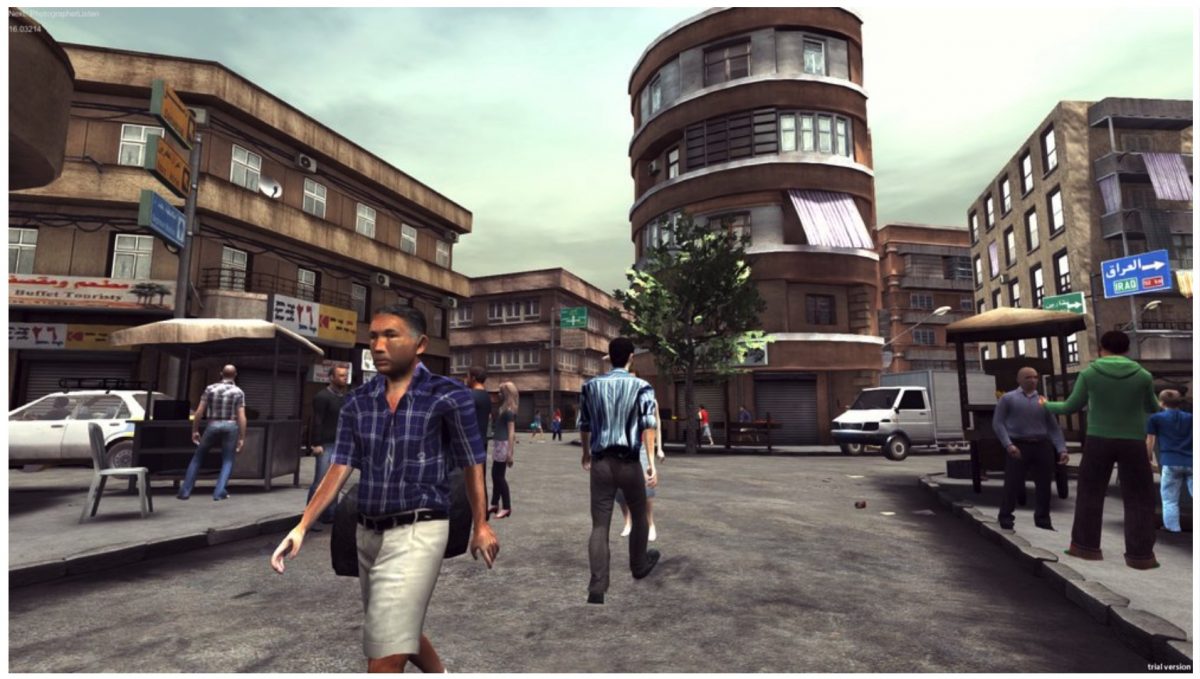SXSW: Virtual reality pioneer Nonny de la Peña on immersive storytelling
Often referred to as the ‘Godmother of Virtual Reality,’ investigative journalist Nonny de la Peña has paved the way for a new era of immersive storytelling though virtual reality. In a keynote speech at the South by Southwest conference this past Tuesday, she spoke about the power of new technology in transforming how people empathize with story subjects.
“Virtual reality creates a space in which you are physically vulnerable and able to connect with a story in much more powerful way than other mediums,” she said.
De la Peña does not shy away from tackling heavy subjects, and has made it her mission to tell real-life stories that create deep empathy for viewers. One of her early projects, “Hunger in the Golden State,” put people on the virtual streets of Los Angeles to witness the recreation of a crisis in which a man falls into a diabetic coma while waiting outside of a food bank. The stimulation is reconstruction of minutes of unedited real time audio recorded by Peña herself during the actual incident. A similar project created in 2013 places audiences in Syria where they witness a child playing on a street corner in Syria when a missile strike hits. (Read more about the project on Storybench’s sister site, Ochre, here.)

“If viewers can feel the power of gunfire overhead and stand shoulder to shoulder with grieving Syrians in the aftermath, they’ll understand these tragedies from the inside and not just as another headline,” de la Peña said.
The sense of presence from being able to walk around in a scene and feel it with your whole body is what creates the heightened emotions that elevate 3D storytelling above other mediums. She believes that experiencing events in this way can drastically change viewers minds on major political topics and has the potential to generate real change going forward.
“Once network providers are able to fully nail 5G, de la Peña believes that VR story consumption will reach the mass market.”
While the Syria project and many of her other works have received overwhelmingly positive feedback, the technology is still limited by dependence on powerful computers and wired VR headsets like the Oculus Rift and HTC Vive. Presentation of these experiences are still limited to small audiences and will not have the impact they are capable of until VR is able to become mainstream.
While the technology is still being developed, Peña believes that 5G wireless networks could be the key to bringing VR experiences to mobile devices. 5G essentially allows for an edge computer on a nearby wireless network to do all of the heavy 3D processing VR requires, and then streams it to a less expensive wireless headset. Once network providers are able to fully nail 5G, she believes that VR story consumption will reach the mass market.
With cheaper headsets and an increased demand for fully immersive content, it is quite possible that journalists will soon be able to place viewers inside compelling 3D news events from their own phones.
“We don’t experience the world flat, we experience it in volume,” she went on to say. “This medium is just waiting for content makers to come in and turn it into something special.”





